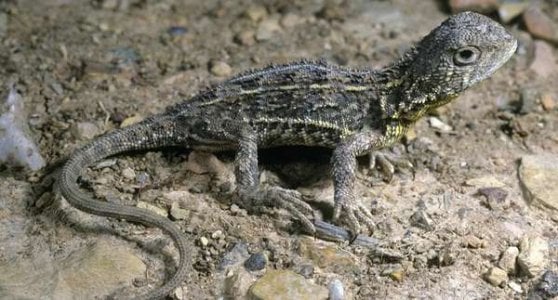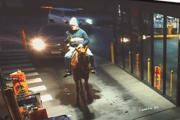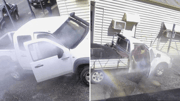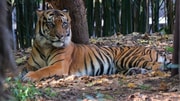Another native species is vanishing—what this new road says about our priorities
By
Maan
- Replies 0
A road project in Australia’s capital just got the green light—despite slicing through one of the last homes of a critically endangered lizard.
It’s a move that has conservationists fuming, with fears this decision could push the elusive species even closer to extinction.
The federal government quietly signed off on it midweek—sparking accusations it tried to bury the news.
Late on Friday, the Department of Climate Change, Energy, the Environment and Water (DCCEEW) confirmed to conservation groups that the Northern Road upgrade at Canberra Airport had been approved.
The news came as a shock to campaigners, including Dr Simon Copeland, executive director of Conservation Council ACT Region, who believed the decision undermined the government’s stated commitment to preventing future extinctions.
‘Last term, the federal government declared it wanted no new extinctions,’ he shared.
‘But scientists have been raising the alarm that this species is on the verge of extinction, and we need to be doing everything in our power to protect its habitat.’
The Canberra grassland earless dragon, once widespread across the ACT, now numbers fewer than 100 in the wild.
Its preferred flat, open plains have long been a magnet for development, leading to the destruction and fragmentation of its habitat.
Although once thought extinct, the tiny reptile was rediscovered in 1991, and later split into four distinct species—all now on the brink, with less than one per cent of their native grassland remaining.
The Northern Road project will see 0.68 hectares of grassland cleared to transform a gravel track into a paved road.
That patch is currently maintained as a roadside verge, and DCCEEW deemed it to be of low quality for dragon habitat.
Officials argued the development would result in a net conservation gain by restoring 6.67 hectares elsewhere.
However, conservationists like Dr Copeland were less concerned about the land’s quality and more about the impact of cutting through one of the species’ last strongholds.
‘When you have a small population already and you split it in half, it makes it harder for them to breed and increase genetic diversity,’ he said.
To mitigate the risks, Canberra Airport Group pledged $1 million towards the ACT Government’s recovery efforts, which include captive breeding and reintroduction.
It also planned to install barrier fencing and wildlife underpasses, designed to allow the dragons safe passage across the road.
But experts remained sceptical.
‘It’s very clear that if you look at their own maps, there’s dragon habitat on either side of the road,’ Copeland said.
‘They have nice ideas. They have barriers and bridges under the road. But there’s no evidence they’ll work. No one has done any research to figure out whether the lizards will use them.’
In a statement, Canberra Airport said the federal department’s decision confirmed there was ‘no increased risk of extinction and no fragmentation’ caused by the project.
Work on the road had previously been paused, pending the minister’s final decision.
When asked to respond to the criticism, Environment Minister Murray Watt’s office provided a statement saying the department had ‘consulted extensively’ with the community and species experts.
‘The varied approval provides stronger protections for the species through several new conditions considered necessary to avert long-term decline,’ a spokesperson said.
It’s not the first time a decision about native wildlife has drawn criticism from conservation groups.
When governments and developers make calls that impact vulnerable species, the backlash can be swift—especially when the methods used raise ethical or environmental concerns.
For another recent example that’s sparked heated debate, take a look at this story involving a controversial culling program.
Read more: Wildlife culling sparks backlash as controversial method draws global scrutiny

If protecting a species means not splitting its last home in half, are we doing enough to stop extinction?
It’s a move that has conservationists fuming, with fears this decision could push the elusive species even closer to extinction.
The federal government quietly signed off on it midweek—sparking accusations it tried to bury the news.
Late on Friday, the Department of Climate Change, Energy, the Environment and Water (DCCEEW) confirmed to conservation groups that the Northern Road upgrade at Canberra Airport had been approved.
The news came as a shock to campaigners, including Dr Simon Copeland, executive director of Conservation Council ACT Region, who believed the decision undermined the government’s stated commitment to preventing future extinctions.
‘Last term, the federal government declared it wanted no new extinctions,’ he shared.
‘But scientists have been raising the alarm that this species is on the verge of extinction, and we need to be doing everything in our power to protect its habitat.’
The Canberra grassland earless dragon, once widespread across the ACT, now numbers fewer than 100 in the wild.
Its preferred flat, open plains have long been a magnet for development, leading to the destruction and fragmentation of its habitat.
Although once thought extinct, the tiny reptile was rediscovered in 1991, and later split into four distinct species—all now on the brink, with less than one per cent of their native grassland remaining.
The Northern Road project will see 0.68 hectares of grassland cleared to transform a gravel track into a paved road.
That patch is currently maintained as a roadside verge, and DCCEEW deemed it to be of low quality for dragon habitat.
Officials argued the development would result in a net conservation gain by restoring 6.67 hectares elsewhere.
However, conservationists like Dr Copeland were less concerned about the land’s quality and more about the impact of cutting through one of the species’ last strongholds.
‘When you have a small population already and you split it in half, it makes it harder for them to breed and increase genetic diversity,’ he said.
To mitigate the risks, Canberra Airport Group pledged $1 million towards the ACT Government’s recovery efforts, which include captive breeding and reintroduction.
It also planned to install barrier fencing and wildlife underpasses, designed to allow the dragons safe passage across the road.
But experts remained sceptical.
‘It’s very clear that if you look at their own maps, there’s dragon habitat on either side of the road,’ Copeland said.
‘They have nice ideas. They have barriers and bridges under the road. But there’s no evidence they’ll work. No one has done any research to figure out whether the lizards will use them.’
In a statement, Canberra Airport said the federal department’s decision confirmed there was ‘no increased risk of extinction and no fragmentation’ caused by the project.
Work on the road had previously been paused, pending the minister’s final decision.
When asked to respond to the criticism, Environment Minister Murray Watt’s office provided a statement saying the department had ‘consulted extensively’ with the community and species experts.
‘The varied approval provides stronger protections for the species through several new conditions considered necessary to avert long-term decline,’ a spokesperson said.
It’s not the first time a decision about native wildlife has drawn criticism from conservation groups.
When governments and developers make calls that impact vulnerable species, the backlash can be swift—especially when the methods used raise ethical or environmental concerns.
For another recent example that’s sparked heated debate, take a look at this story involving a controversial culling program.
Read more: Wildlife culling sparks backlash as controversial method draws global scrutiny
Key Takeaways
- Australia approved a road project through endangered dragon habitat in Canberra.
- Only around 100 Canberra grassland earless dragons remain in the wild.
- Experts warn the road could fragment habitat and reduce genetic diversity.
- Canberra Airport pledged $1 million towards species recovery and plans mitigation measures.
If protecting a species means not splitting its last home in half, are we doing enough to stop extinction?








